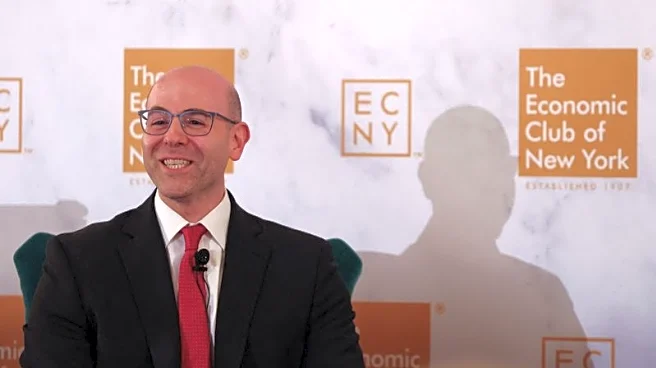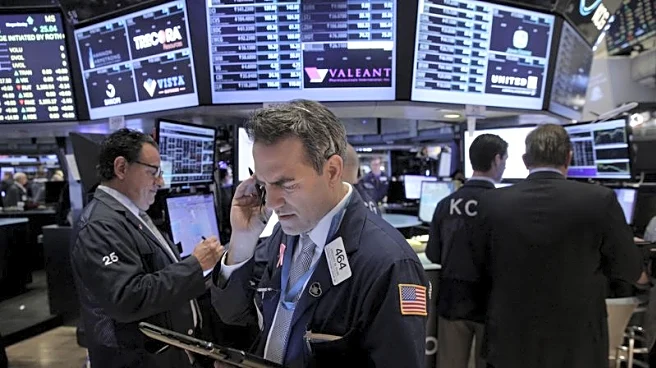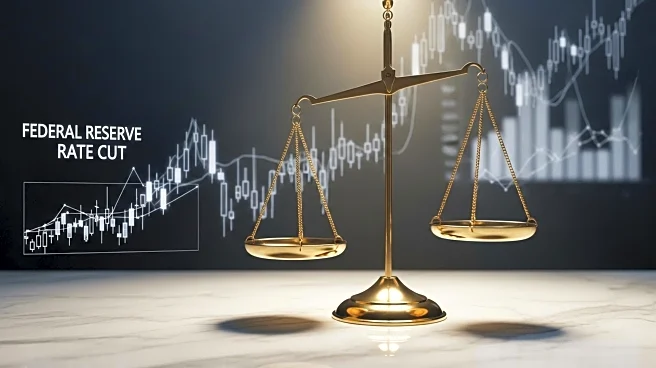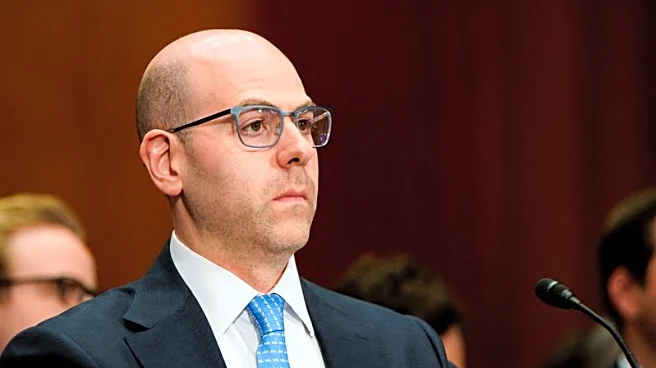What's Happening?
Federal Reserve officials are currently divided on the number of interest rate cuts needed by the end of 2025, as revealed in the minutes from their September meeting. The Federal Open Market Committee (FOMC) showed a near-unanimous agreement on the necessity of reducing the central bank's key overnight borrowing rate due to a weakening labor market. However, there is a split on whether two or three total reductions are required this year. The meeting resulted in a quarter percentage point cut, bringing the federal funds rate to a target range of 4%-4.25%. The 'dot plot' of individual members' expectations showed a narrow 10-9 split, with a slight majority favoring two more cuts before the year's end. Newly appointed Governor Stephen Miran was the lone dissenting vote, advocating for a more aggressive half-point cut.
Why It's Important?
The Federal Reserve's decision on interest rates is crucial for the U.S. economy, impacting borrowing costs for consumers and businesses. Lower interest rates can stimulate economic activity by making loans cheaper, potentially boosting spending and investment. However, the division among Fed officials highlights the uncertainty in the economic outlook, with some members advocating for caution due to financial conditions that may not be overly restrictive. The outcome of these decisions will affect various stakeholders, including financial markets, which closely monitor Fed actions for signals on future economic policy. The split also reflects differing views on how to best support the economy amid current challenges.
What's Next?
The Federal Reserve is expected to continue evaluating economic indicators to determine the appropriate path for interest rates. With two more meetings scheduled for the year, the FOMC will likely reassess the economic landscape and adjust its policy stance accordingly. Market participants and analysts will be watching closely for any shifts in the Fed's approach, as these decisions will influence market dynamics and economic forecasts. The ongoing debate within the Fed underscores the complexity of navigating monetary policy in uncertain times.











